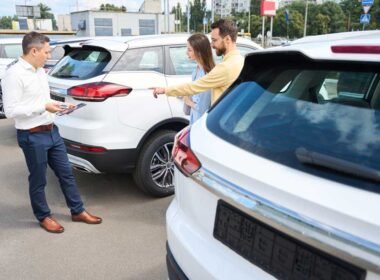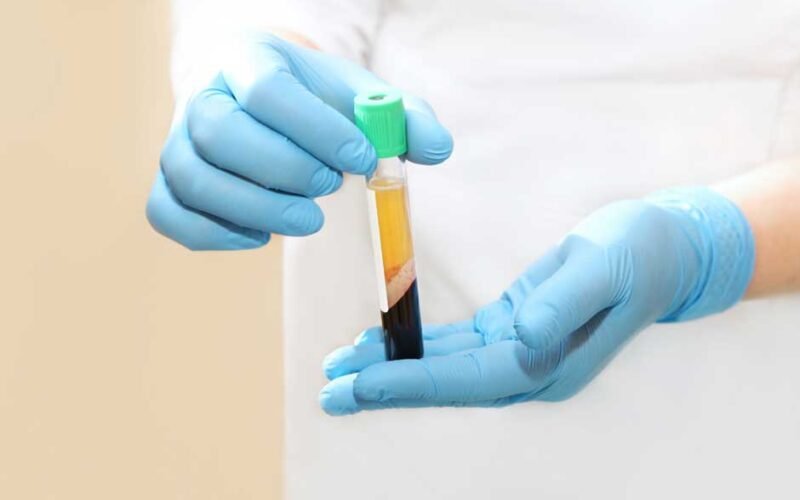You’re pedaling through the city, weaving past parked cars and staying alert. Then, without warning, a car door swings open right in front of you—and there’s no time to stop. That gut-punch moment of impact can leave both your bike and your body crumpled in seconds. For cyclists in Indianapolis, this isn’t just a scary possibility—it’s an all-too-common danger.
Dooring accidents can lead to broken bones, concussions, and months of recovery, especially when streets are tight and visibility is low. Understanding your options afterward is just as important as staying safe in the first place. Local cyclists have found real support through Vaughan & Vaughan accident attorneys in Indianapolis, who help navigate the legal aftermath with clarity and care. Knowing what to expect can give you peace of mind and confidence every time you ride.
Why Narrow Streets Amplify the Risk
On tight urban roads, even a parked car becomes part of the hazard zone. Cyclists are often forced closer to rows of parked vehicles, which leaves very little time or space to react if a door suddenly opens. Drivers may not check their mirrors or look behind them before swinging a door wide. That small oversight can cause a major collision in a matter of seconds.
Indianapolis has its fair share of narrow streets, especially in older neighborhoods where bike lanes are squeezed between traffic and parked cars. For a rider, there’s constant pressure to balance staying visible with staying safe. The fear of being “doored” makes many riders hug the center line—putting them at risk from moving vehicles instead. It’s a no-win situation unless every road user practices better awareness.
Injuries Cyclists Suffer in Dooring Accidents
When a cyclist crashes into an unexpectedly opened car door, the results can be physically and emotionally devastating.
- Broken Collarbones and Wrists- Impact with a door or the pavement often causes fractures in the collarbone or wrists as riders instinctively try to brace themselves.
- Head and Brain Injuries- Even with a helmet, cyclists can suffer concussions or traumatic brain injuries if they hit a car, ground, or another object.
- Road Rash and Lacerations- Sliding across asphalt can lead to deep abrasions, cuts, and infections, especially if protective gear isn’t worn.
- Nerve and Soft Tissue Damage- Sudden impact can compress nerves or strain ligaments, causing lingering numbness, tingling, or limited mobility.
- Spinal and Back Injuries- Falls involving twisting or high-speed impact can injure the back or spine, sometimes resulting in long-term pain or disability.
- Psychological Trauma- Many riders experience anxiety, flashbacks, or hesitation when returning to the road after a dooring incident.
Immediate medical attention and thorough documentation are essential not just for recovery, but also for holding the responsible party accountable.
What Drivers Often Don’t Realize About Their Role
Many drivers assume that once their car is parked, their responsibility ends. But opening a door into traffic—especially without looking—is a direct cause of harm. Indiana law recognizes this, holding drivers accountable when they don’t check for cyclists. Still, awareness is low, and many motorists genuinely don’t think twice before flinging their door open.
Education campaigns can help, but personal accountability goes further. Taking two seconds to glance in the mirror or over the shoulder can prevent a serious injury. Drivers in cities with more bike traffic, like Indianapolis, need to treat door zones as part of the street. A parked car doesn’t mean a cyclist is safe to pass.
The Hidden Dangers That Come After the Impact
The crash itself is only part of the problem. After being hit, many cyclists are thrown into moving traffic, compounding the danger. Even if the door only causes a fall, there’s still the risk of a secondary impact from another car. It’s a terrifying chain reaction that can turn a bad moment into a tragedy.
There’s also emotional trauma to consider—some riders develop anxiety or PTSD about returning to the road. The sudden nature of these accidents leaves people shaken and unsure of how to protect themselves. Insurance claims and fault disputes just add to the stress. That’s why acting quickly after the incident makes such a difference in your recovery.
The Role of Witnesses in Building a Strong Case
Often, these accidents happen so quickly that the only people who fully understand what occurred are those who saw it unfold. Witnesses can confirm whether the driver checked for cyclists or flung the door open without warning. They can also verify if the street conditions made it nearly impossible to avoid the crash. These details carry serious weight when trying to prove fault.
If you’re ever in a door accident, ask nearby pedestrians, drivers, or residents if they saw anything. Collect names, numbers, and any potential video footage from local businesses. The more information you gather on the scene, the stronger your case becomes. Even a brief description from a bystander can make a major difference.
Why Blame Often Falls on the Wrong Person
It’s frustrating how often cyclists get blamed for dooring crashes. Some people assume bikers should’ve just “been more careful” or “stayed farther away.” But anyone who’s ever shared a narrow street with traffic knows that’s not always possible. In reality, the person opening the door holds the legal and ethical responsibility.
Insurance companies may still try to spin the story differently. That’s where detailed photos, medical records, and legal guidance become essential. Cyclists deserve to be treated fairly, not punished for navigating poorly designed roads. Holding drivers accountable can also push cities to prioritize safer bike infrastructure.
Immediate Steps to Take After a Dooring Incident
Reacting quickly and carefully after a dooring accident can protect your health and strengthen any legal or insurance claims.
- Move to Safety- If you’re able, get out of the road to avoid further injury from traffic.
- Call for Emergency Help- Contact 911 to report the incident and request medical assistance if needed.
- Document the Scene- Take clear photos of your injuries, the vehicle, the door position, your bike, and the surrounding area.
- Seek Medical Attention- Even if you feel okay, visit a doctor to check for internal injuries or delayed symptoms like concussions.
- Exchange Information- Collect the driver’s name, contact info, license plate number, and insurance details—without discussing fault.
- File a Police Report- Ask responding officers to create a report and request a copy for your records.
- Consult a Legal Professional- Contact an attorney familiar with cyclist rights to explore your legal options and avoid common mistakes.
These steps can protect your well-being and help ensure you receive the support and compensation you may be entitled to.
How Local Policies Affect Bike Safety in Indianapolis
City design plays a massive role in cyclist safety, especially when it comes to dooring. Indianapolis has made strides in adding bike lanes, but many still run alongside parking zones without enough buffer. This layout leaves cyclists vulnerable, especially during busy hours. Changing this setup requires both public demand and city-level decision-making.
Cyclists can speak up at local meetings, support bike-friendly initiatives, and document near-misses to push for change. Real safety comes from both education and infrastructure. Until then, awareness and smart habits are your best defense. With more voices advocating for change, the streets of Indianapolis can become safer for everyone.










